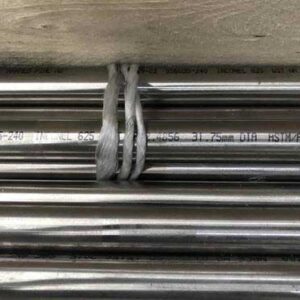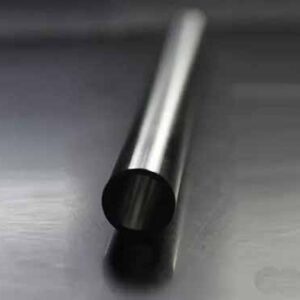Description
Inconel 617/ UNS N06617
Material grades and equivalents
Inconel 617/ UNS N07617 / SEW VDIUV W.Nr.2.4663 NiCr23Co12Mo / AFNOR NC22KDA
-
Inconel 617 is a solid-solution, strengthened, nickel-chromium-cobalt- molybdenum alloy with an exceptional co mbination of high-temperature strength and oxidation resistance. The alloy also has excellent resistance to a wide range of corrosive environments, and it is readily formed and welded by conventional techniques
-
Inconel 617/ UNS N06617 is a high-temperature corrosion-resistant alloy, especially in the oxidation and carbonization environment up to 1100 ℃ cycle has excellent corrosion resistance. These corrosion resistance coupled with excellent mechanical properties make this alloy particularly suitable for high temperature applications. It has good instantaneous and long-term mechanical properties at high temperatures up to 1100°C. Used in industrial and aviation steam turbine parts, air heaters, muffle tanks and radiation halls, high temperature heat exchangers, valves and springs, high temperature gas cooling nuclear reactors, such as high temperature parts of nuclear reactors-helium/helium medium heat exchangers, chemical equipment, petrochemicals Spiral pipes and pipes in the industry.
Inconel 617 Chemical composition:
% |
Ni |
Cr |
Fe |
C |
Mn |
Si |
Mo |
Co |
Al |
Ti |
P |
S |
N |
B |
Cu |
Zr |
Min |
20 |
0.04 |
8 |
10.0 |
0.8 |
0.2 |
||||||||||
Max |
Rest |
24 |
2.0 |
0.08 |
0.2 |
0.2 |
10.0 |
13.0 |
1.5 |
0.6 |
0.010 |
0.010 |
0.05 |
0.002 |
0.2 |
0.045 |
Inconel 617 Physical properties:
Density |
8.4 g/cm³ |
Melting Point |
1330-1380℃ |
Corrosion Resistance:
-
elevated temperatures, those elements cause the formation of a thin, subsurface zone of oxide particles.
-
The zone forms rapidly upon exposure to high temperatures until it reaches a thickness of 0.001 to 0.002(0.025 to 0.05 mm). The oxide zone provides the proper diffusion conditions for the formation of a
-
protective chromium oxide layer on the surface of the metal. It also helps to prevent spalling of the protective layer.
-
Inconel 617 has excellent resistance to carburization. Table 9 compares alloy 617 and some other carburization-resistant alloys in a gaseous carburizing environment at 2000°F (1095°C). The weight-gain measurements indicate the amount of carbon absorbed during the test period.
-
The composition of INCONEL alloy 617 includes ubstantial amounts of nickel, chromium, and aluminum for a high degree of resistance to oxidation and carburization at high temperatures. Those elements, along with the molybdenum content, also enable the alloy to withstand many wet corrosive environments.
N06617 alloy has excellent corrosion resistance in hot corrosion areas such as vulcanization environments, especially oxidation and carbonization environments that cycle up to 1100°C. These corrosion resistance coupled with excellent mechanical properties make this alloy particularly suitable for high temperature applications.
N06617 smelting process:
-
VAR+ESR
-
AAM+ESR
-
VIM(VAIL)+ESR
N06617 forging process:
N06617 alloy heating temperature is 1110~1140℃; final forging temperature is not less than 950℃, slab rolling heating temperature is 1130~1170℃, finishing rolling heating temperature is 1090~1130℃. The solution treatment temperature of the finished product is 1010~1050℃.
Heat Treatment:
-
Inconel 617 is normally used in the solutionannealed condition. That condition provides a coarse grain structure for the best creep-rupture strength. It also provides the best bend ductility at room temperature. Solution annealing is performed at a temperature of 2150°F (1175° C)for a time commensurate with section size.
-
Cooling should be by water quenching or rapid air cooling.
Specifications:
Rod, Bar, Wire, and Forging Stock |
ASTM B 166/ASME SB 166/ASTM B 564/ASME SB 564/SAE AMS 5887/VdTÜV 485/ISO 9724/DIN 17752/DIN 17753/DIN 17754 |
Plate, Sheet, and Strip |
ASTM B 168/ASME SB 168/SAE AMS 5888/SAE AMS 5889/VdTÜV 485/ISO 6208/DIN 17750 |
Pipe & Tubing |
VdTÜV 485/ISO 6207/ASTM B 546/ASME SB 546/DIN 17751 |







